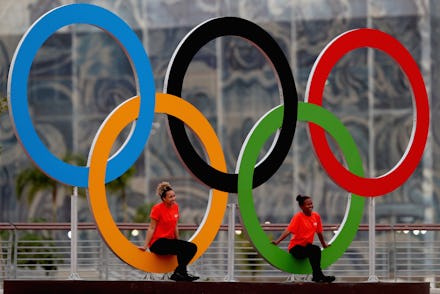What do the Olympic Rings Stand for? The Surprising History of the Olympic Colors

Regardless of all the controversies that the International Olympic Committee has had over the years, the symbolism of the Olympic Games themselves still resonate with many people around the world. It's why the five colored ring design is the indelible first image that comes to mind when someone brings up the Olympics. But what do these five rings represent, and how did they come into existence?
The symbol was designed over 100 years ago, in 1912 by Frenchman Pierre de Coubertin, who co-founded the modern games after a decades-long battle to have them revived. The white background and the five different color rings — red, black, green, yellow and blue — represented all the colors of the countries competing in the games at the time.
The symbol's popularity really grew much later, in 1936, when the Berlin Games Organizing Committee President Carl Diem requested construction of a milestone with the Olympic rings carved into the sides. Awkwardly enough, this symbol would be featured by Adolf Hilter and company in Nazi propaganda.
Currently, the International Olympic Committee states that the rings represent the five continents, merging both North and South America into one America. "They are interlaced to show the universality of Olympism and meeting of the athletes of the whole world during the Olympic Games," it states on the committee's website.
In a strange way, the IOC seems to actually insult Coubertin by adding, "At first, the way the rings were interlaced was sometimes a little odd compared with what they are used to today." They added, "Nowadays, the Olympic symbol is subject to very strict rules. Graphic standards have been set down, which determine, for example, the exact position of each ring."
Before 1951, the blue ring represented Europe, the red the Americas, the yellow Asia, the black Africa, and the green, Australia and Oceania. However, that was thrown out after the IOC found there was no evidence that Coubertin had originally intended for those specific rings to represent those continents.
Read more: